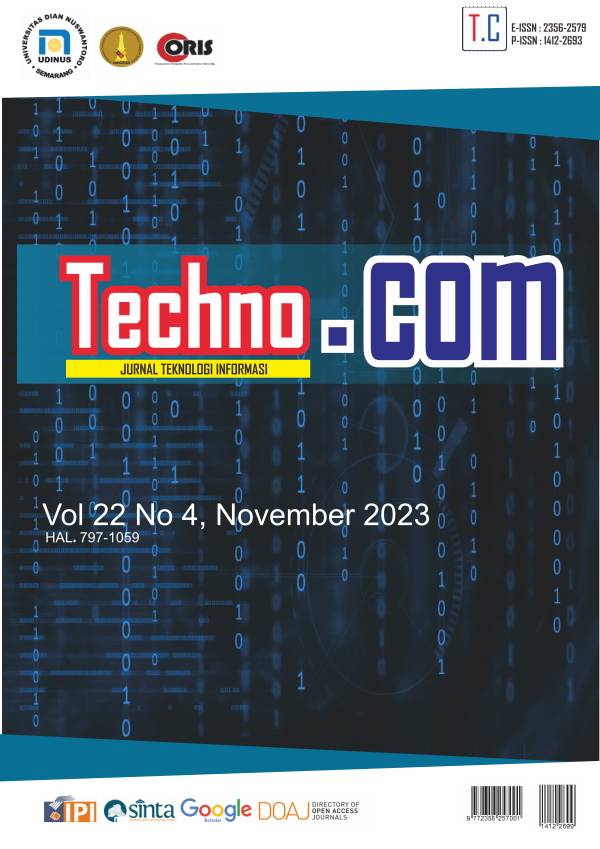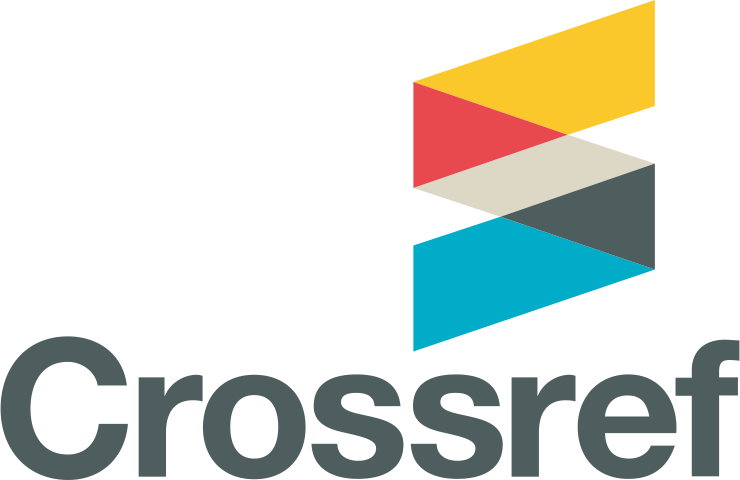Pemodelan Evakuasi pada Ruang Koridor dengan Cellular Automata berbasis Perilaku Manusia
DOI:
https://doi.org/10.33633/tc.v22i4.9151Keywords:
Panic, Behaviour, Earthquake, Cellular Automata, ModelingAbstract
Sebagai salah satu negara yang berada di garis khatulistiwa Indonesia menjadi salah satu negara yang memiliki potensi terjadinya bencana Gempa Bumi cukup tinggi. Pencegahan mengurangi jumlah korban adalah prioritas dalam penanganan ketika terjadi bencana, baik bencana gempa bumi maupun bencana lainya. Korban akibat bencana gempa bumi secara umum berada di dalam gedung. Jika struktur bangunan gedung tidak dibuat dengan baik maka potensi jumlah korban akan meningkat. Salah satu cara untuk mengurangi jumlah korban akibat gempa bumi adalah membuat sistem evakuasi dengan baik. Sistem evakuasi yang baik akan bisa menjadi petunjuk pengunjung gedung ketika terjadi bencana. Sistem evakuasi tentu akan berjalan dengan baik jika didukung dengan mental dari dalam diri korban dengan baik. Salah satu penyebab dari kegagalan sistem evakuasi adalah kepanikan dari dalam diri korban. Jika korban mengalami kepanikan saat terjadi bencana maka sistem evakuasi tidak dapat berjalan dengan baik dan berpotensi meningkatnya jumlah korban. Analisa dampak kepanikan dalam sebuah sistem evakuasi juga menjadi penentu keberhasilan sebuah sistem evakuasi.References
Burstedde C, Klauck K. “Simulation of Pedestrian Dynamics Using a Two-dimensional Cellular Automaton”, Physica A 295, 507–525, June 2001.
Burstedde C, Ansgar K, Kai Klauck, Andreas Schadschneider, Johannes Zittartz, Cellular Automaton Approach to Pedestrian Dynamics, “Applications, Pedestrian and Evacuation Dynamics'', M. Schreckenberg and S.D. Sharma (Eds.), PP. 87 ,Springer, 2001.
Kirchner Ansgar, Andreas Schadschneider, “Simulation of evacuation processes using a bionics-inspired cellular automaton model for pedestrian dynamics”, Physica A: Statistical Mechanics and its Applications, Vol - 312, 2002.
D. Helbing, A. Jhohansson, “Pedestrian, Crowd and Evacuation”, Encyclopedia of Complexity and Systems Science 16, 6476-6495, 2010.
Dos Santos Robson F, Das Gracas Maria B, Born Margarethe S., “Simulating Collective Behavior in Natural Disaster Situations : A Multi Agent Approach”, Earthquake Research and Analysis,P 436 – 460, 2012.
Cristian Pablo T, Printista marcela, Luis Marcelo E, “Evacuation Simulation using Cellular Automata”, JCS&T Vol. 7 No. 1, 2007.
Nan GAO, Wengguo Weng, Wei MA, Shunjiang NI, Quanyi HUANG, Hong Yong YUAN, “Fire Spread Model for Old Towns Based on Cellular Automaton, Tsinghua Science and Technology, 13(5): 736-740, October. 2008.
Vorst Harrie C.M., “Evacuation Models and Disaster Psychology”, H.C.M. Vorst / Procedia Engineering 3, P 15–21, 2010.
Murphy, Brown K, Sreenan C, “Problem Decomposition for Evacuation Simu-lation using Network Flow. Department of Computer Science”, IEEE/ACM, 2012.
Nitzsche C, “Cellular Automata Modeling for Pedestrian Dynamics”, Mathematicsh Naturwissenschaftliche Fakultat, Universitat Greifswald, Bachelor Thesis, 2013.
Nishinari Katsuhiro, “Extend Floor Field CA Model for Pedestrian Dynamics”, IEICE Transactions on Information and Systems E87-D(3), Juy. 2013.
Harsono Tri, “Human Behavior Based Evacuation in A Large Room Using Cellular Automata Model For Pedestrian Dynamics”, EEPIS, KCIC 2014.
L.Z. Yang, D.L. Zhao, J. Li, and T.Y. Fang, "Simulation of the kin behavior in building occupant evacuation based on cellular automaton". Building and Environment, vol. 40, no. 3, pp. 411-415, March 2005.
J. Shi, A. Ren and, C. Chen, "Agent-based evacuation model of large public buildings under fire condition". Automation in Construction, vol. 18, no. 3, pp. 338-347, May 2009.
Liu Tianyu, Yang Xiaoxia, & Wang Qianling. A Fuzzy-Theory-Based Cellular Automata Model for Pedestrian Evacuation From a Multiple-Exit Room. IEEE , 8, 106334–106345, 2020.
Jiayang Li, Changkun Luo, Xin Li, Songqi Sun, “A Simulation Model of Pedestrian Evacuation Considering the Fuzzy Visual Range by Fuzzy Cellular Automata”, Chinese Control and Decision Conference (IEEE Explorer), P 3788 – 3793, June. 2019.
Liu Qiujia, Lu Linjun, Zhang Yijing, Miaoqing Hu, "Modeling the dynamics of pedestrian evacuation in a complex environment", Physica A: Statistical Mechanics and its Applications, Vol 585, September, 2021.
Mu’arifin, Harsono Tri, barakbah Ali Ridho, ” Pemodelan Evakuasi Pejalan Kaki di Ruang Koridor dengan Cellular Automata Studi Kasus Gempa Bumi”, Techno.Com, Vol 21 No 2, Mei, 2022.
Wang Ke, Li Yongxing, Qian Shunzhi, "Analysis of Indoor Guided Pedestrian Evacuation Dynamics in Single- and Multiple-Exit Scenarios: Toward a Unified Scheme for Guide Assignment", Transportation Research Record Journal of the Transportation Research Board, June, 2022.
Xu Haihong, Guo Ren-Yong, Wu Pei-Yang, "Pedestrian evacuation dynamics considering information guidance", International Journal of Modern Physics C, Vol 34, October 2022.
Downloads
Published
Issue
Section
License
License Terms
All articles published in Techno.COM Journal are licensed under the Creative Commons Attribution-NonCommercial 4.0 International (CC BY-NC 4.0). This means:
1. Attribution
Readers and users are free to:
-
Share – Copy and redistribute the material in any medium or format.
-
Adapt – Remix, transform, and build upon the material.
As long as proper credit is given to the original work by citing the author(s) and the journal.
2. Non-Commercial Use
-
The material cannot be used for commercial purposes.
-
Commercial use includes selling the content, using it in commercial advertising, or integrating it into products/services for profit.
3. Rights of Authors
-
Authors retain copyright and grant Techno.COM Journal the right to publish the article.
-
Authors can distribute their work (e.g., in institutional repositories or personal websites) with proper acknowledgment of the journal.
4. No Additional Restrictions
-
The journal cannot apply legal terms or technological measures that restrict others from using the material in ways allowed by the license.
5. Disclaimer
-
The journal is not responsible for how the published content is used by third parties.
-
The opinions expressed in the articles are solely those of the authors.
For more details, visit the Creative Commons License Page:
? https://creativecommons.org/licenses/by-nc/4.0/
















